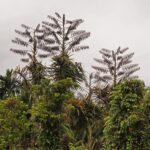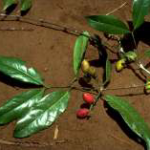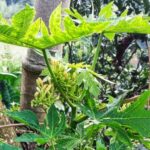White truffles (Tuber magnatum) are the most highly-priced truffle species. In total, six different truffle species occur on the Istra peninsular. Four of them are variations of Black truffles (T. aestivum, T. aestivum var. uncinatum, T. melanosporum, T. brumale), and two belong to the White truffle group (T. borchii, T. magnatum). Tuber borchii is commonly called the ‘Whitish truffle’ and Tuber magnatum the ‘White truffle.’ All truffle species are hunted (truffles are ‘hunted,’ not ‘collected’) during certain seasons with specially trained dogs.
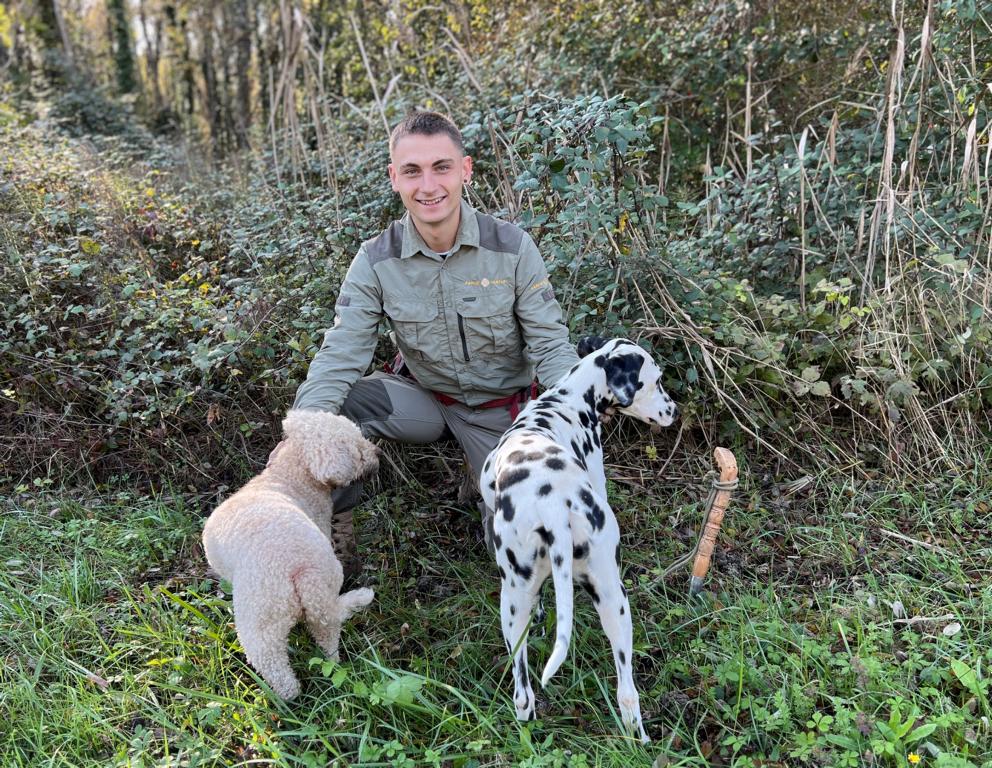
Ben, a truffle hunter of the ‘Karlić Tartufi – GIR doo’ company at Paladini in Istria/Croatia, with the two truffle-sniffing dogs, Bubica and Tufi.
This White truffle hunting experience was conducted with the Karlić Tartufi company at the beginning of November 2024.
Area and habitats of where White truffles are found in Istria
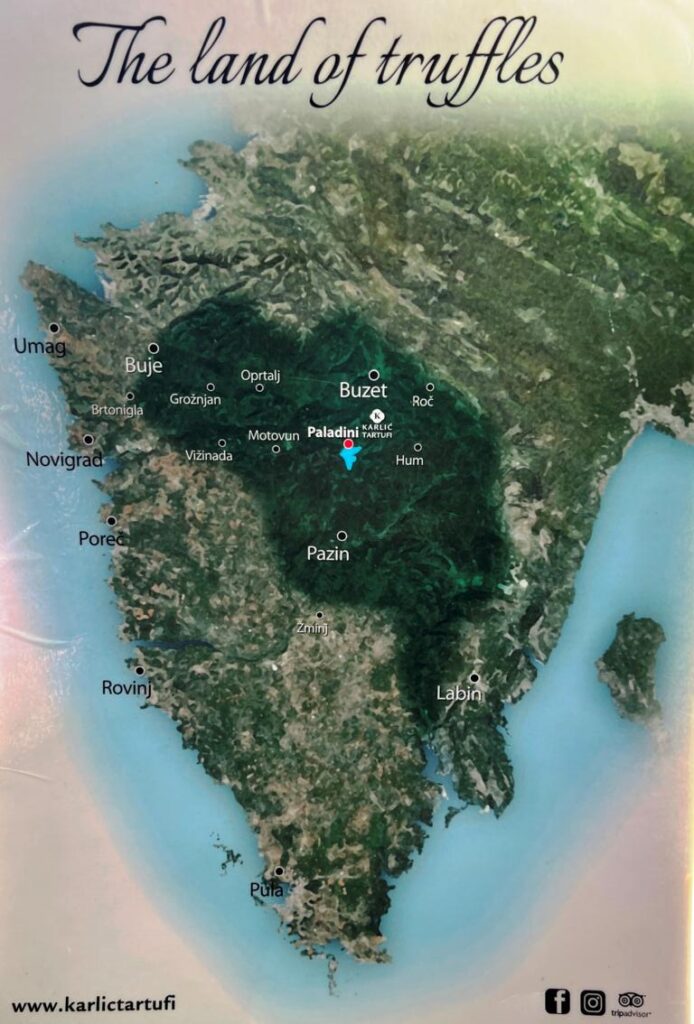
White truffles grow in the heart of the peninsular, in the forests around Buzet and Motovun. They are also encountered in wet forest areas along the River Mirna.
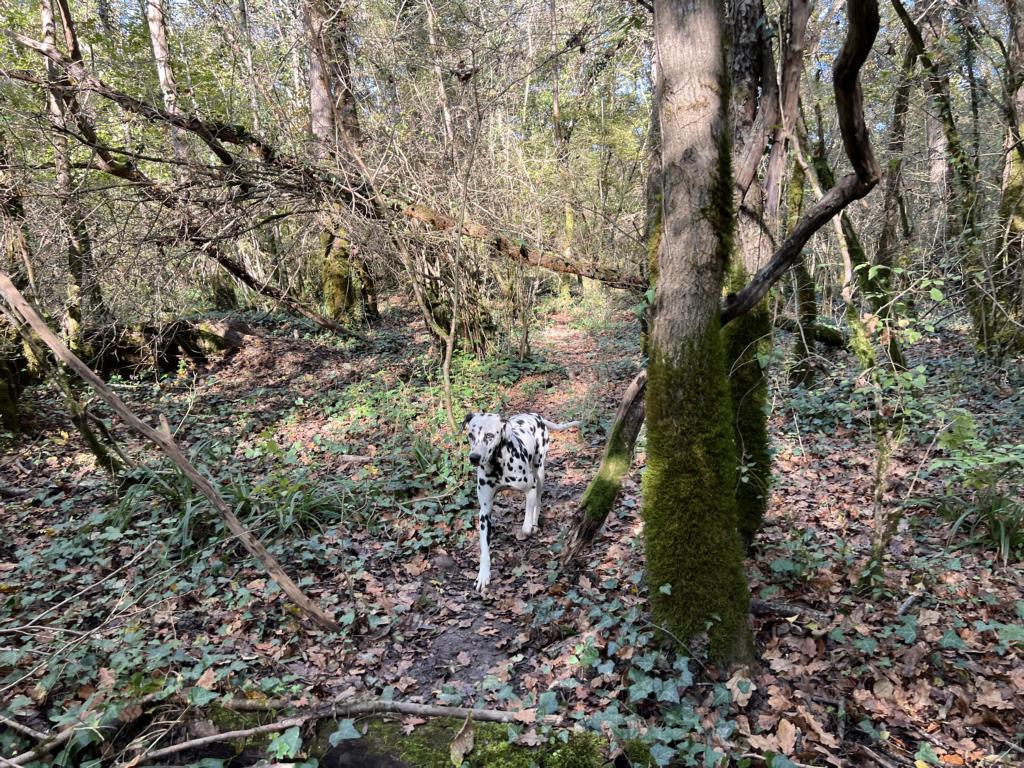
White truffles like to grow in deciduous forests and meadows with alkaline pH and loamy or sandy soil, which is rich in carbonates.
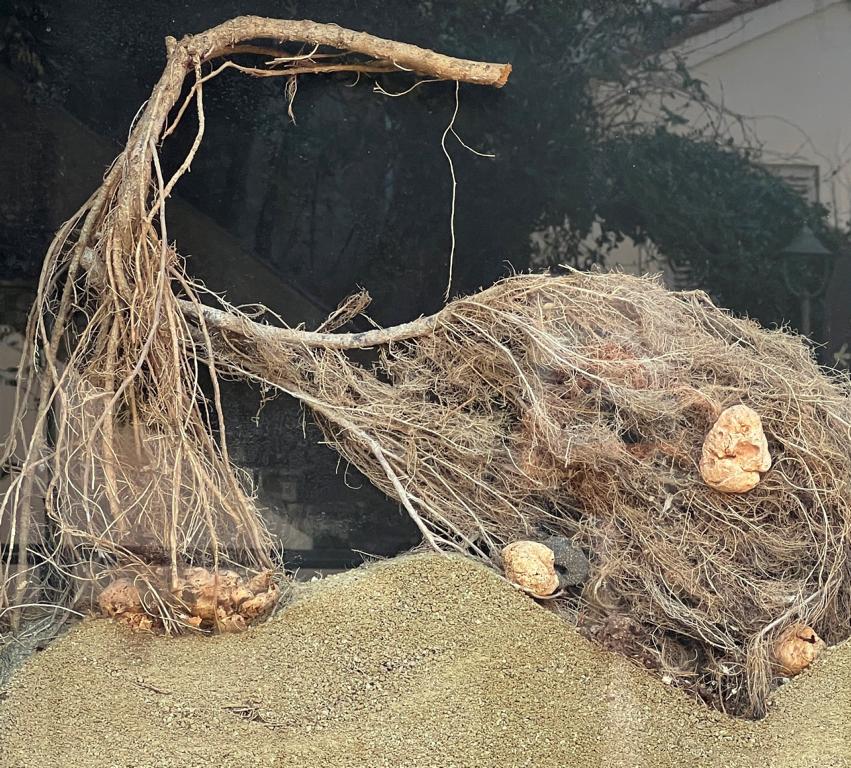
They grow in symbiosis with oak trees, linden, hazel, poplars, and hornbeam on their fine lateral roots underground. Therefore, truffles growing under different tree species smell differently. The depth in the soil where to find them can be from some centimeters to one meter. When we were hunting them, they were found in depths between 10cm / 4’’ to about 30cm /1 ft. White truffles grow everywhere in these wet and densely overgrown deciduous forests, but particularly in the areas adjacent to ditches.
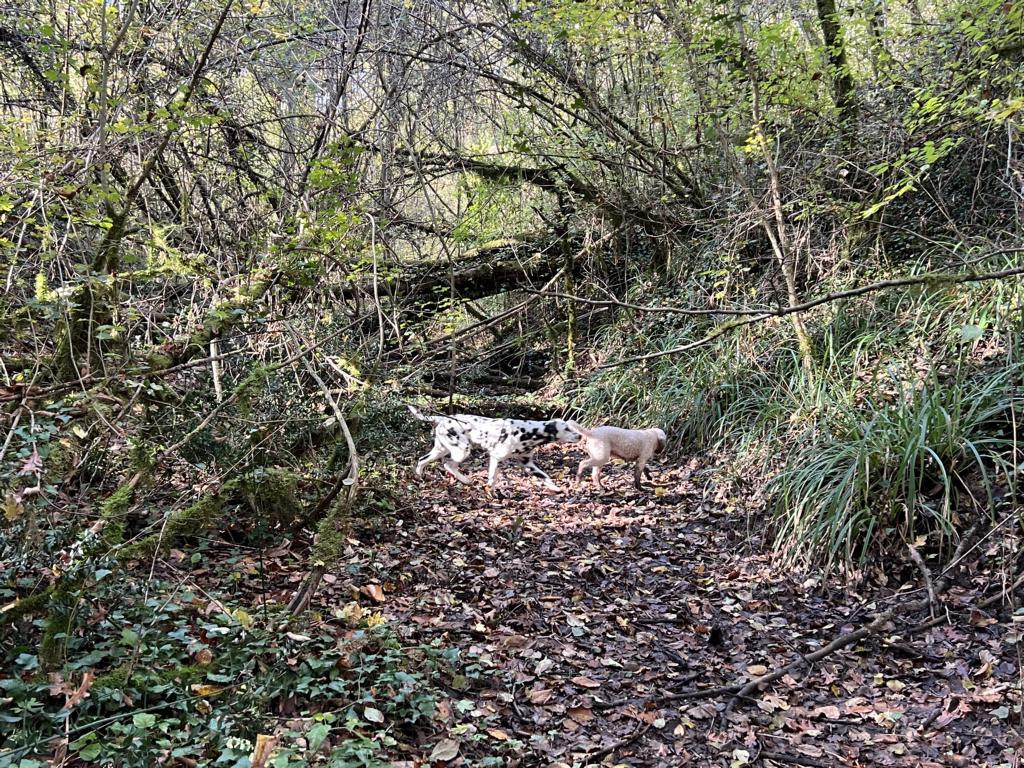
Big host trees are often located at the forest edge, and their lateral roots grow far into neighboring meadows. These, on first sight, non-ideal areas for truffles frequently produce a good crop of them.
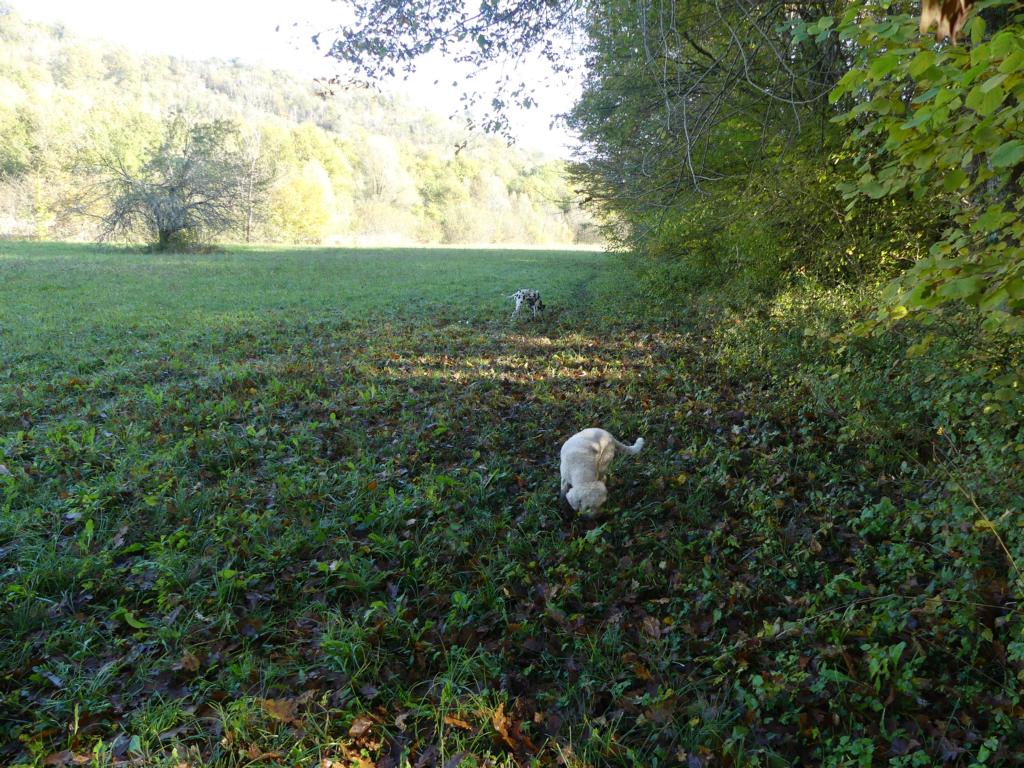
In the 18th century, local farmers in Istra often dug up these strange fruits when plowing or hoeing soil along the forest lines. They regarded these as rotten and stinking potatoes and fed them to their pigs or threw them away. At that time, truffles were deemed unfit for human consumption. Already at that time, these truffles were growing under meadows and not only in the forests.
Description of White truffles
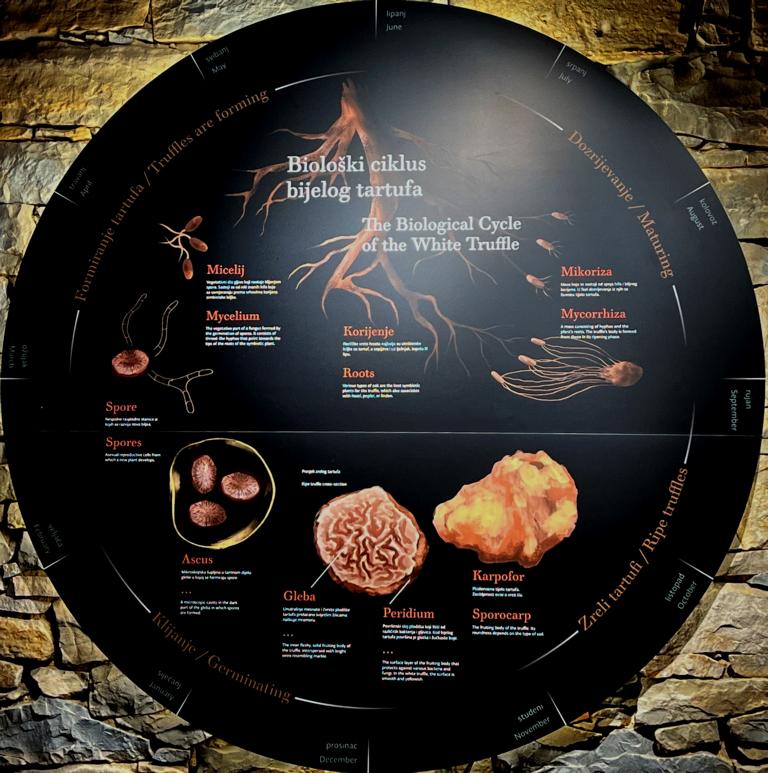
The truffle museum in Paladini explains the biological cycle of white truffles. There, it can be seen, that the fruiting body is fully developed between late September and late December, which is obviously the harvesting period.
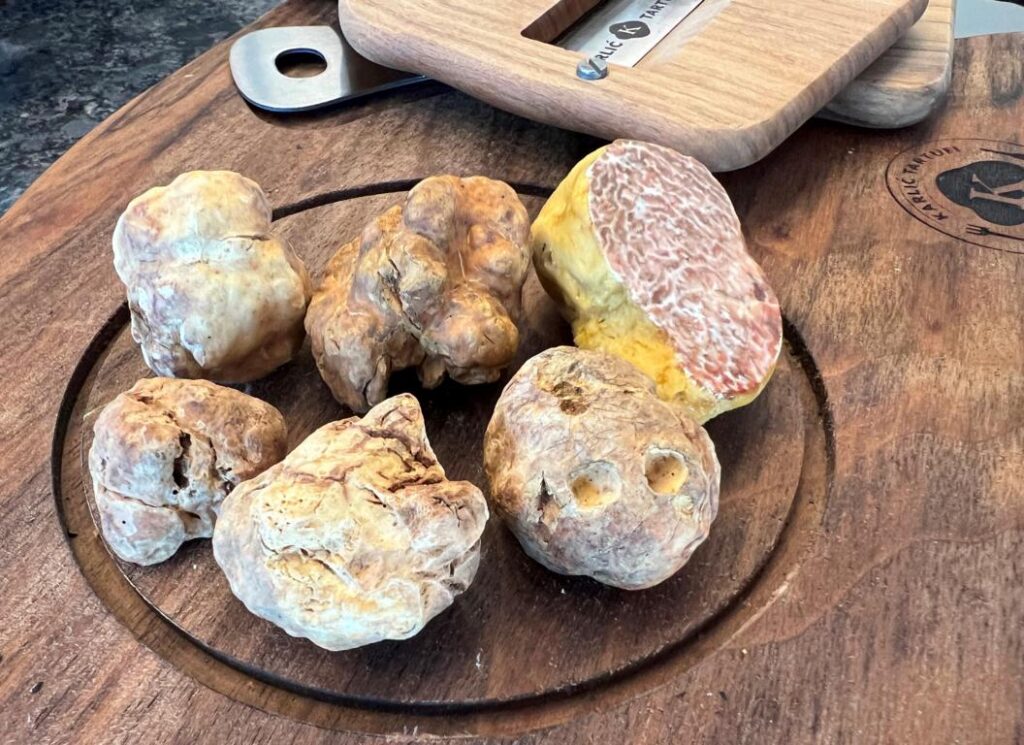
The White truffle is relatively inconspicuous, especially when still in the loamy soil. It resembles a muddy potato, and its characteristic smell is the main distinguishing factor from the soil. After cleaning with brush and water, it exhibits an ochre-yellow to light-brown outside coloring. Regular sizes found are from pea-size up to about 200 grams. All truffles will be rated from one to three depending on the size and undamaged or damaged condition. Above this rating, so-called jokers occur, such as the 1,3 kg White truffle found by Mr. Zigante around the Levade area.
Truffle sniffing dogs
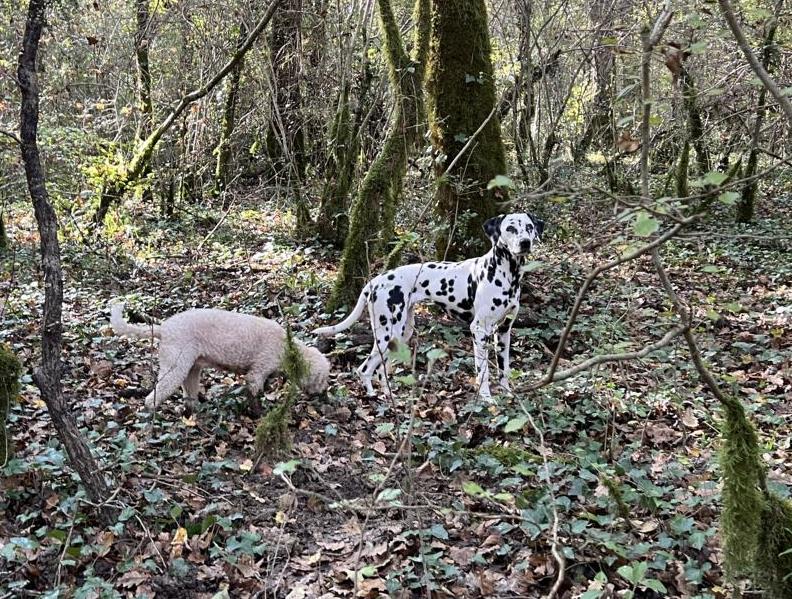
Only truffle-sniffing dogs are used in Istria, and no pigs or other animals. Bitches are preferred, as they don’t get as easily distracted by other dogs as male dogs are. There is no specific dog breed better suited for truffle sniffing than another. But the dog should have a sturdy frame, be active, and like digging for truffles. We used a white-coated Lagotto Romangnolo dog as the main sniffer and a young Dalmatian dog to learn from the Romangnolo.
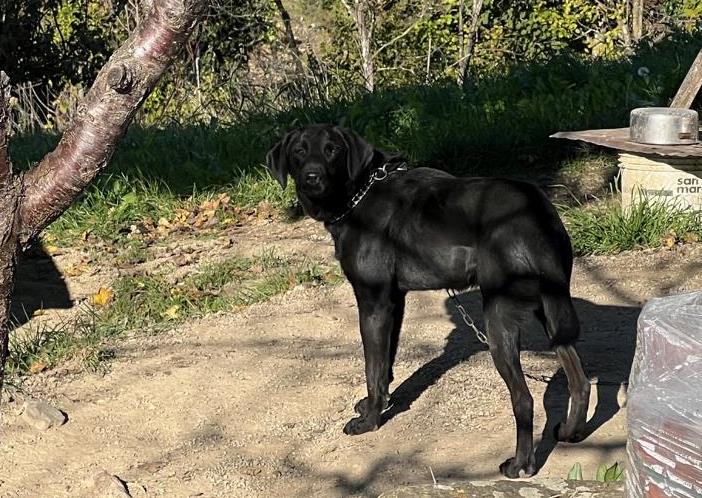
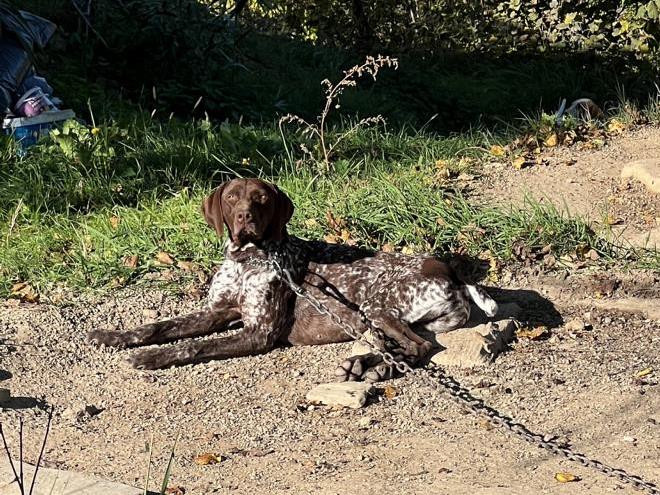
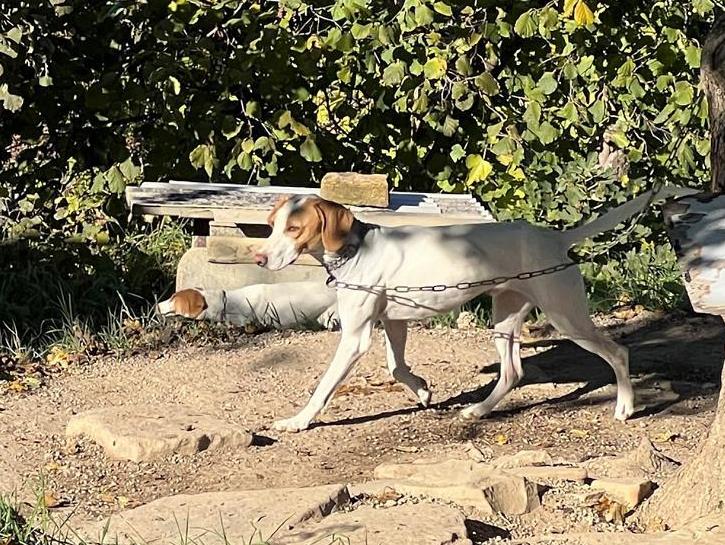
Other truffle hunters in the village of Paladini used German Shorthaired Pointers, English Pointers, and a breed similar to a Majorca Sheperd Dog.
Spade for truffle digging
In the local dialect, an Otka is a specially shaped and light spade the hunter uses to quickly and efficiently dig up truffles. As truffle hunting in Istra evolved, the spade changed its shape, but there is no general rule as to what it should look like. Each hunter and truffle company adapts it to their specific needs. The Karlić Tartufi company, for example, uses a stainless steel mini-shovel with a wooden handle crooked to one side and specific carvings on the handle.
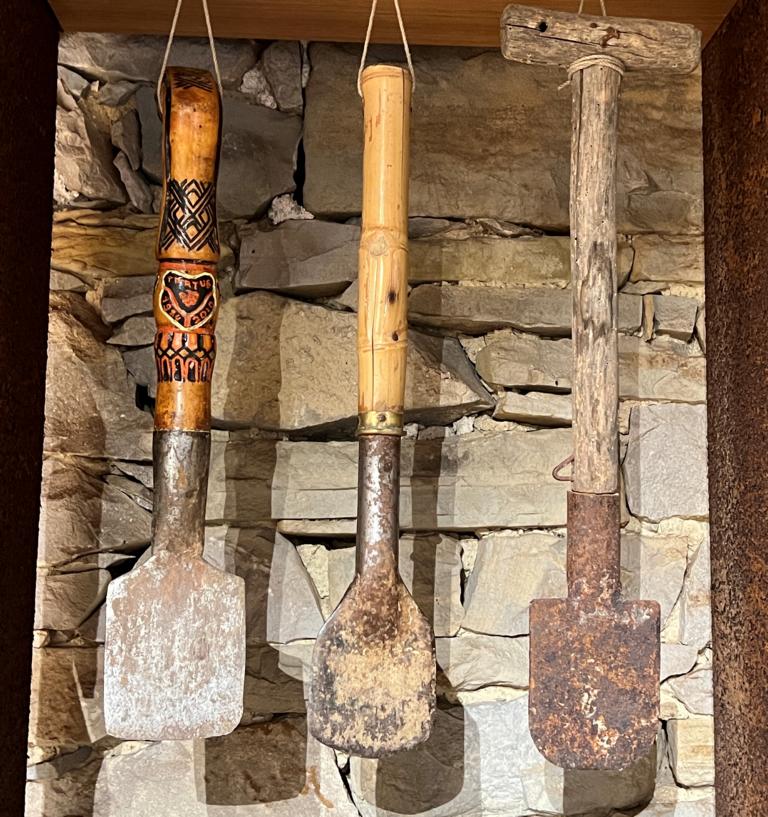
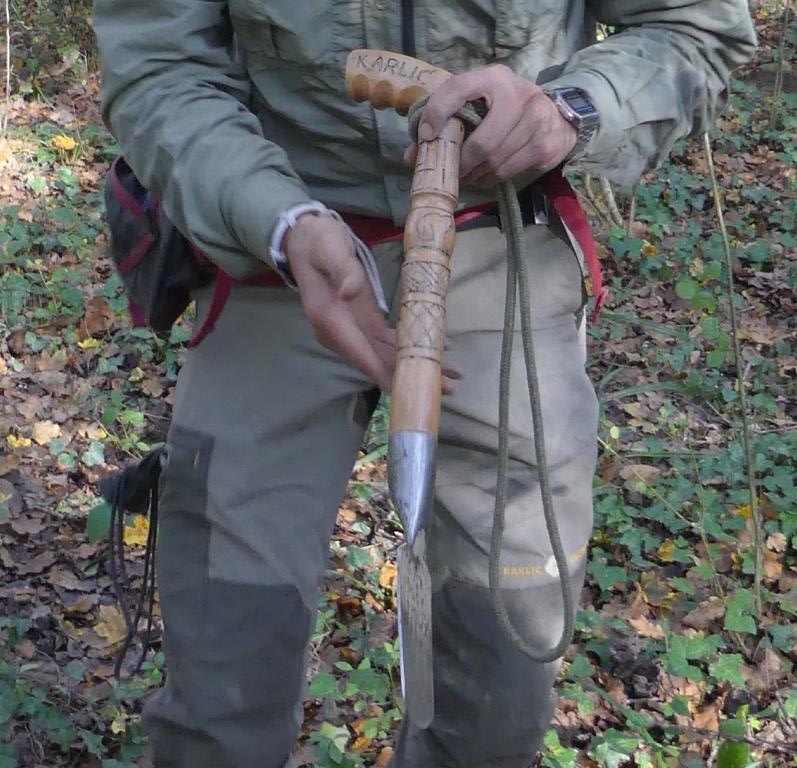
How a White Truffle Hunt proceeds
After finding a suitable entry point into the forest, the dogs start sniffing around immediately, up to a distance of 50 meters from the hunter. Whenever one of the two dogs has his muzzle down to earth and starts scratching, the hunter runs to that place and keeps the dog away from further scratching.
The hunter now exposes the soil and takes soil samples, which he sniffs. The White truffle smell is very pronounced and can be easily smelled by a human. The hunter now works like an archeologist. He tries to find the strongest-smelling soil and works himself carefully deeper. Sometimes, he lets the dog scratch more profoundly, and sometimes, he uses his Otka (shovel) to dig.
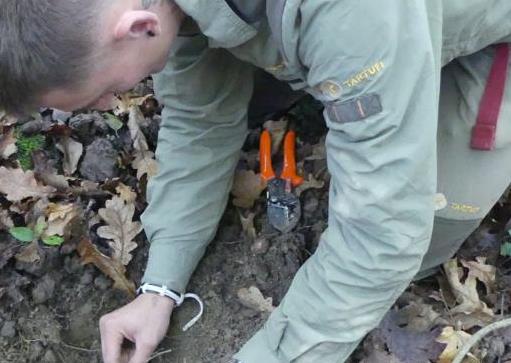
He also carefully cuts away lateral roots and rootlets that hold up further digging or overgrowing the truffle body. This is essential to keeping the fruit body intact and avoiding damage to the truffle.
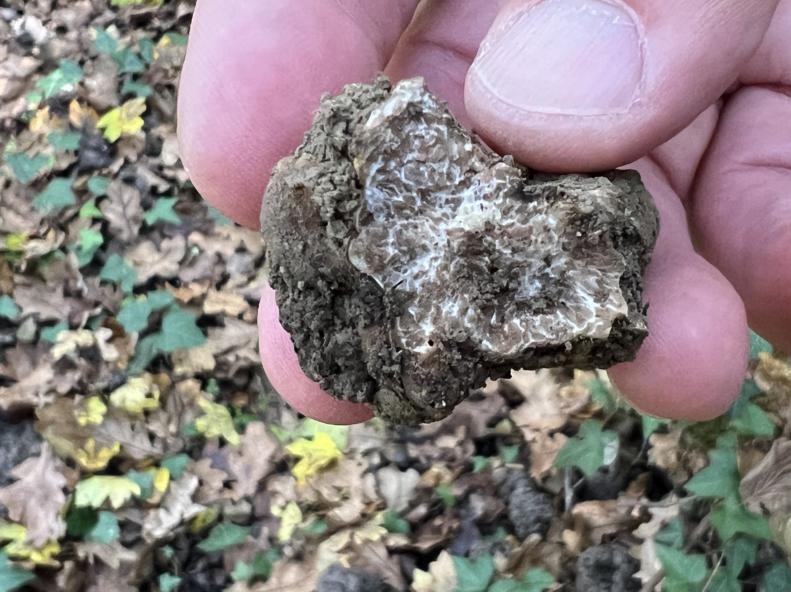
After removing the truffle from the soil, he estimates its size and value. During our outing, we found five White truffles, of which two were of a size of about 50 grams, and two were smaller. One of the truffles had no value, as the fungus material was brittle, not strongly smelling, and cracked in the middle.
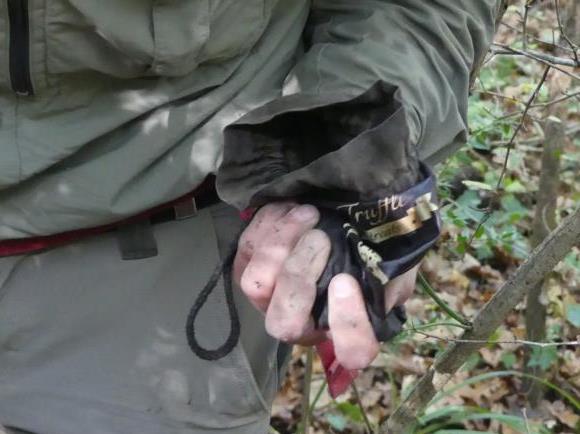
As a reward for finding all the truffles, Bubica, the Romangnolo bitch, always received after the dig-up some treats. These were dog pellets soaked with truffle oil. And the trainee dog – Tufi, the Dalmatian – also received one each time.
In former times, the truffles were collected in a wicker basket in a canvas backpack. Nowadays, plastic bags are used for storage.
White truffles in the kitchen
Truffles are not eaten for their nutritional value, but for the unique smell, they impart to other types of food or drinks. Therefore, they are used in a wide array of recipes.
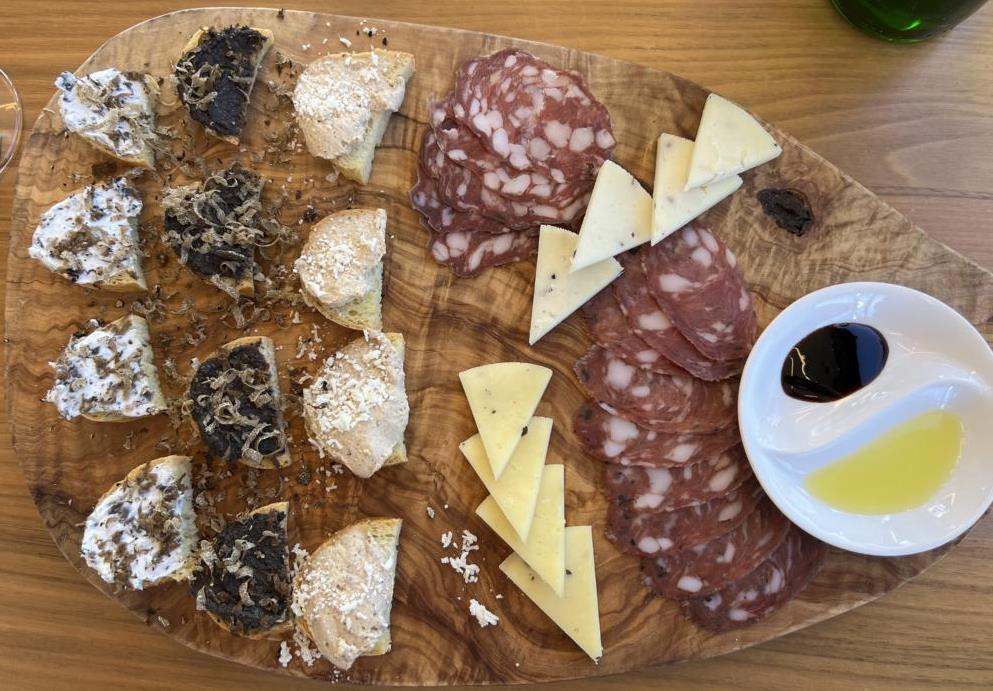
We tasted our collected White truffles on canapes, which we compared with those loaded with Black truffles.
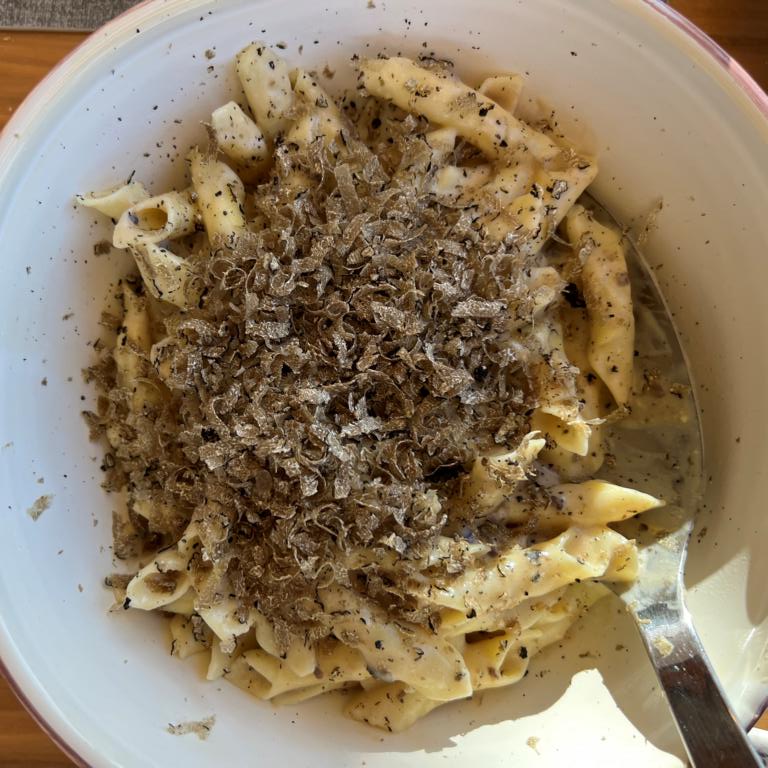
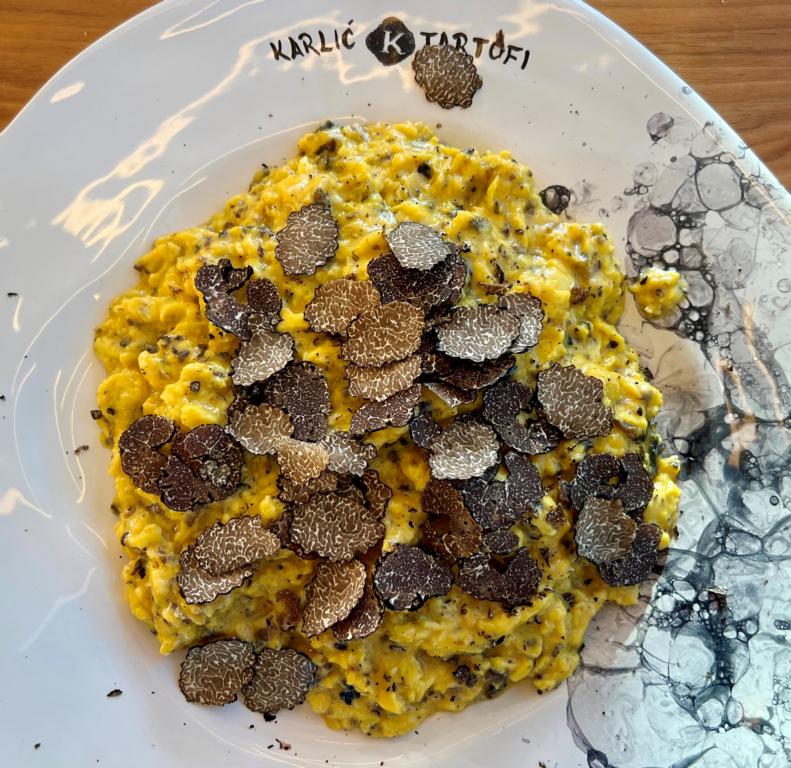
Following that, we enjoyed Fuzi pasta with a generous load of White truffle shavings, scrambled eggs with Black truffles, and a tray of heavenly-tasting truffle-loaded dessert.
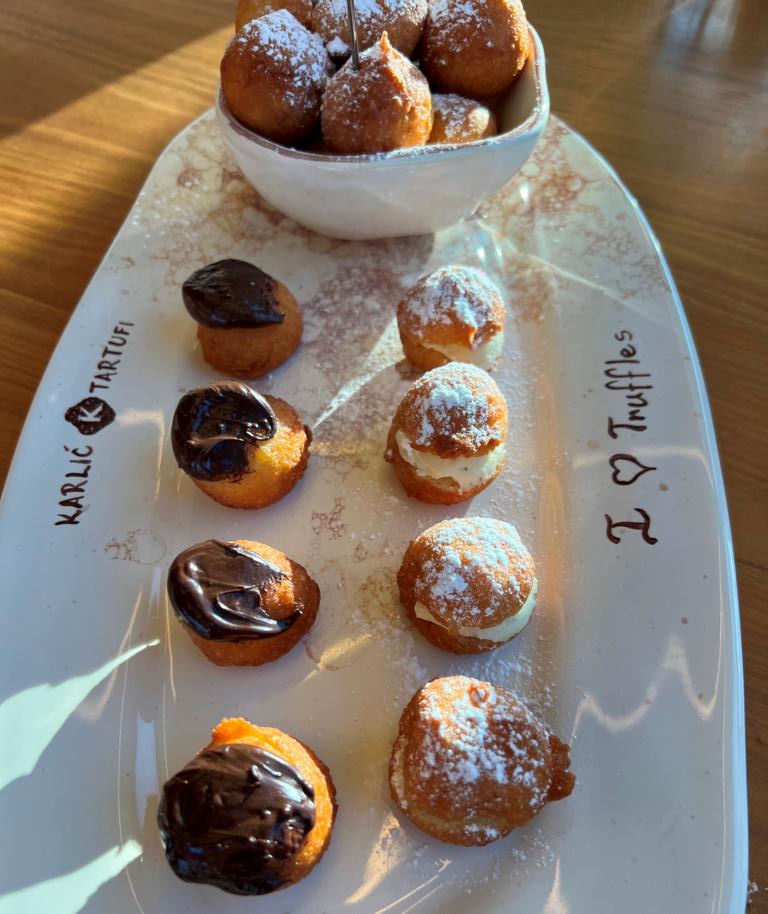
Truffle hunting was a great adventure, and eating truffles as well! We can only recommend this activity—and no, we don’t get or have received a dime for this recommendation. It comes from our heart.
Lessons learned about White truffles:
- These truffles can only be found naturally in France, Italy, and Croatia. In the US, they are farmed artificially.
- Finding White truffles without a sniffing dog or other animal is impossible at the technology level in 2024.
- Truffle hunter and dog work like clockwork together, finding and digging up these elusive fungi.
- The original home of White truffles is Alba in Italy, but also Istrian truffles are on a similar quality level.
Further readings about Mushrooms on this website:
Some varieties of edible wild mushrooms in DR Congo
Chanterelle mushrooms in Thailand
.



